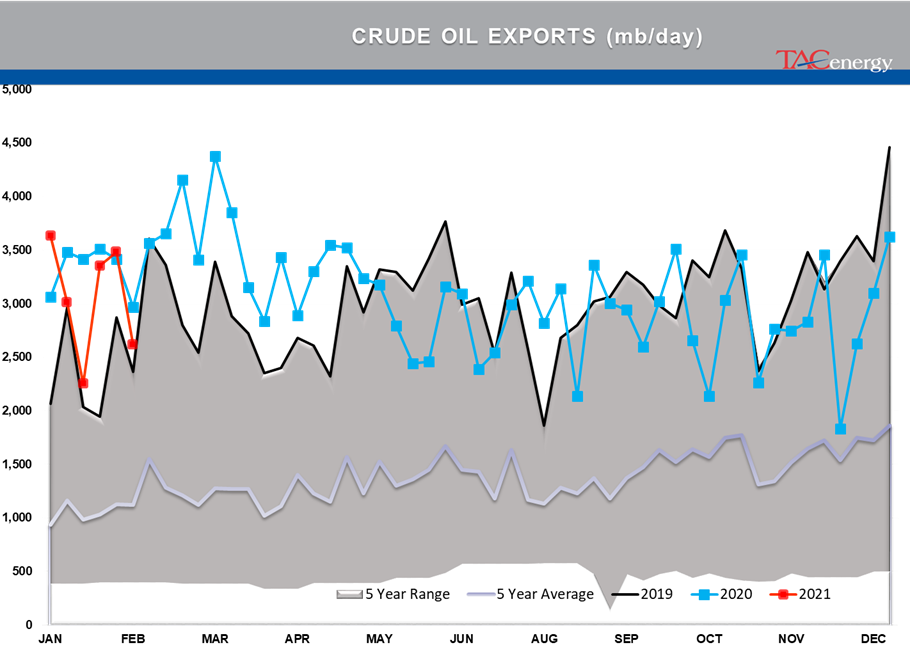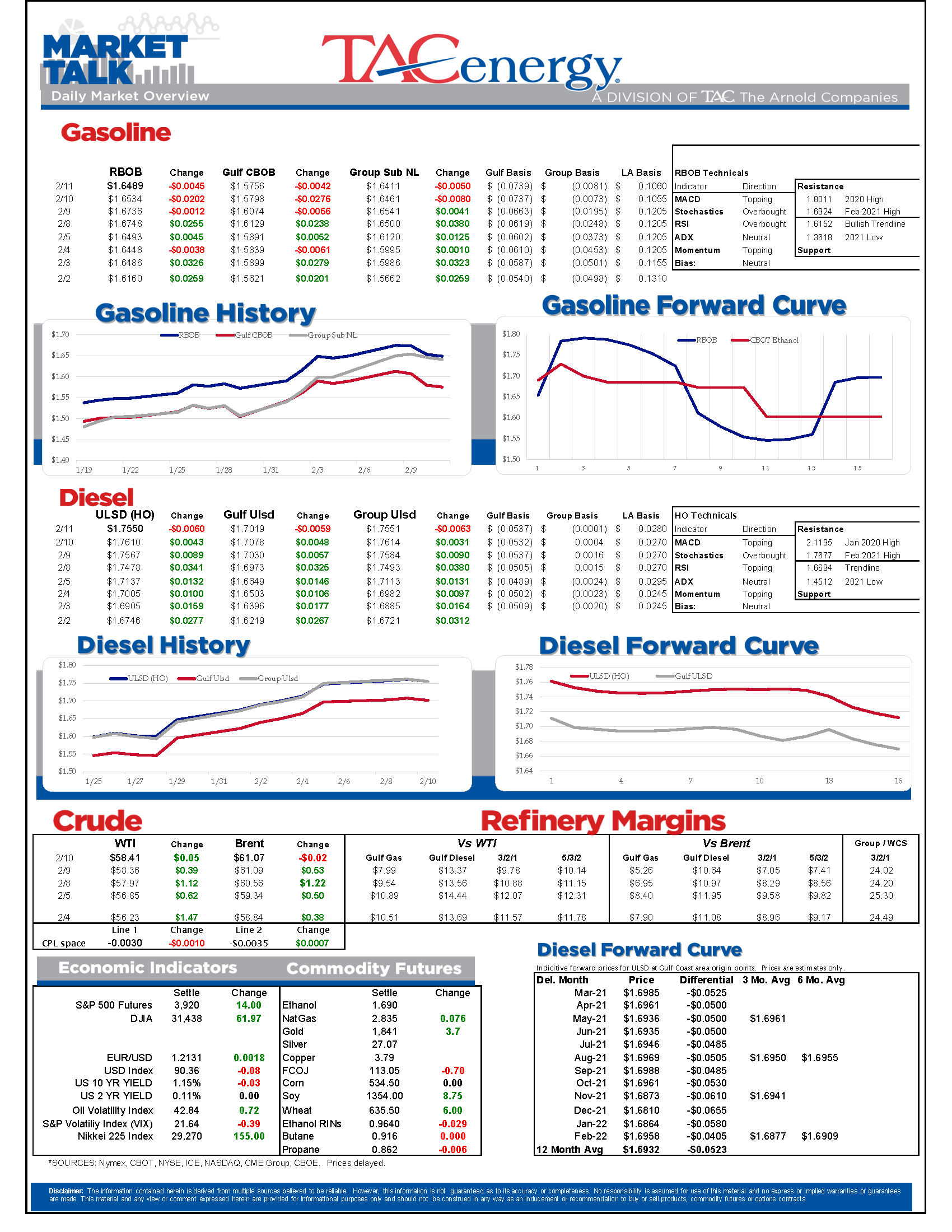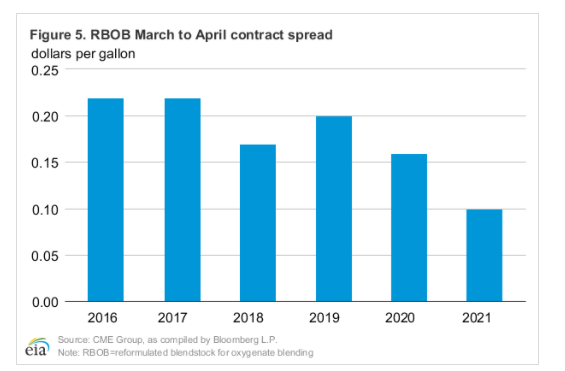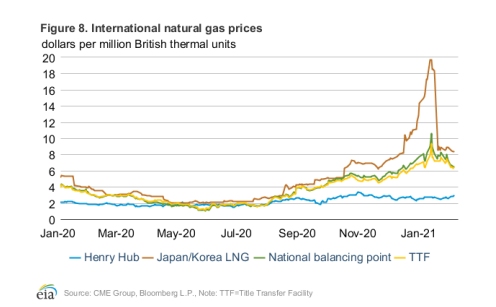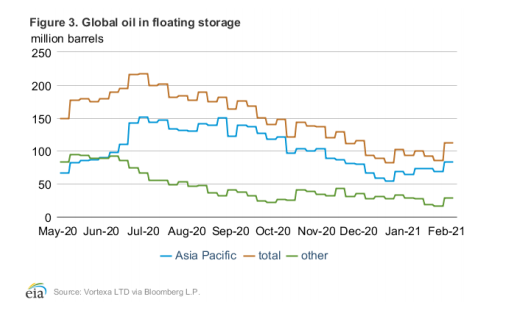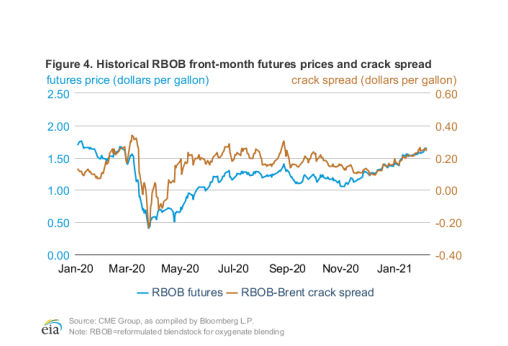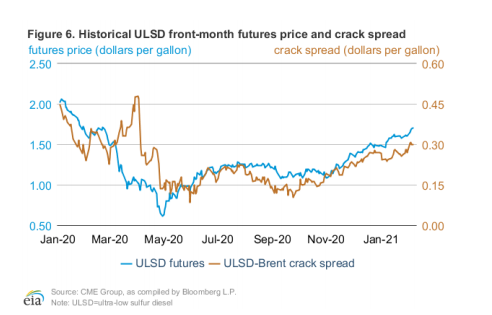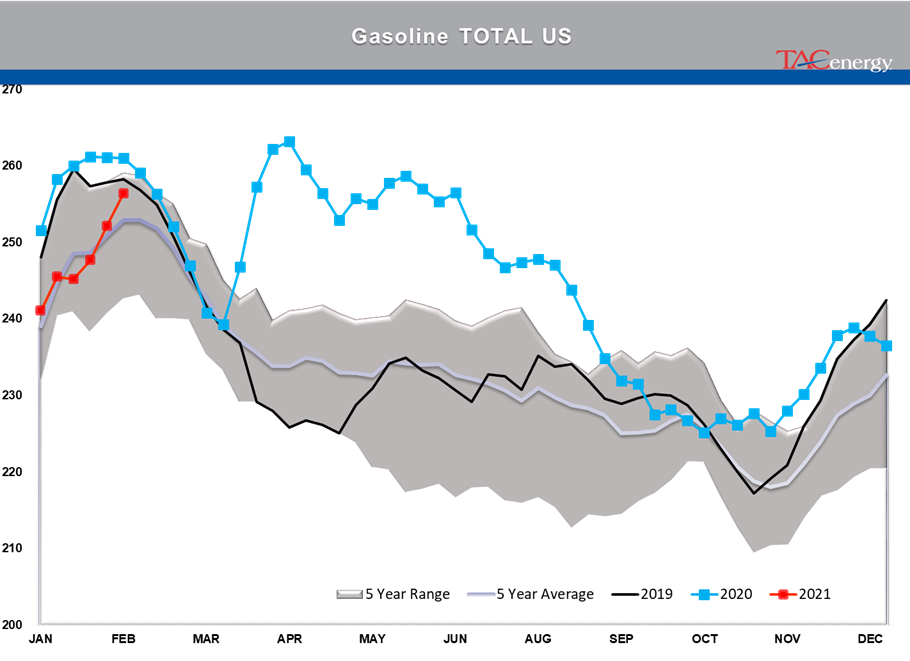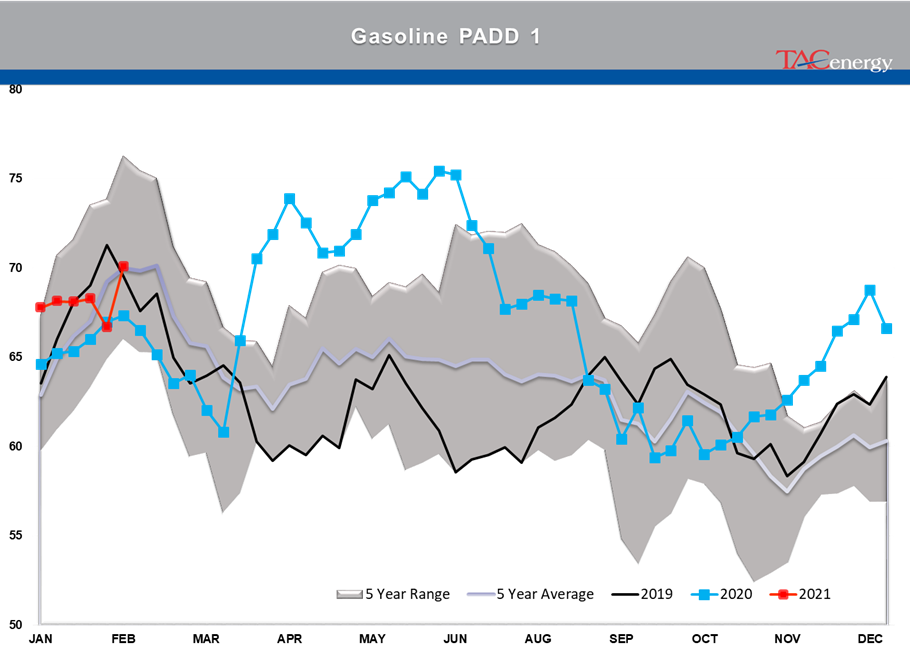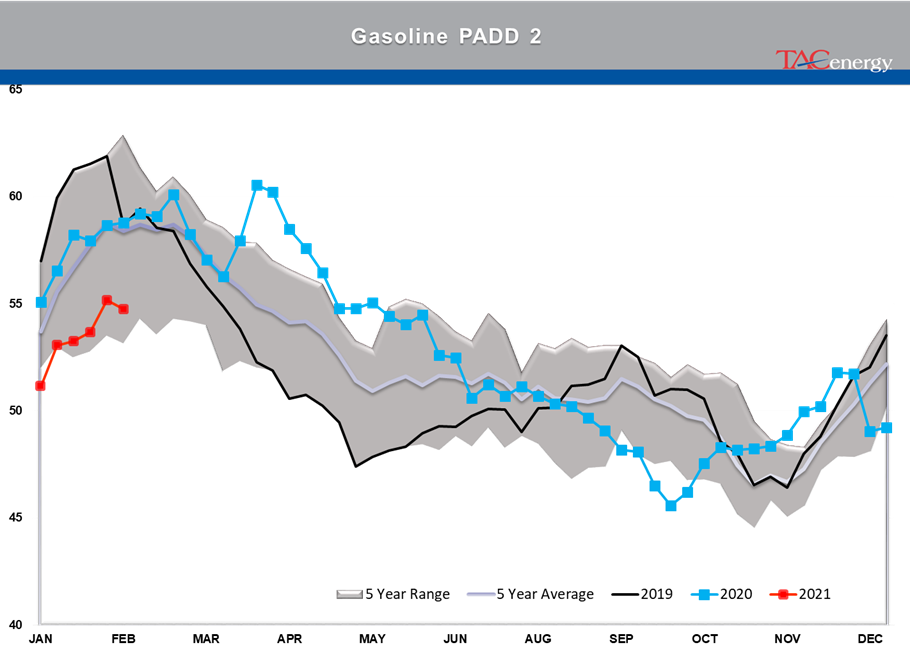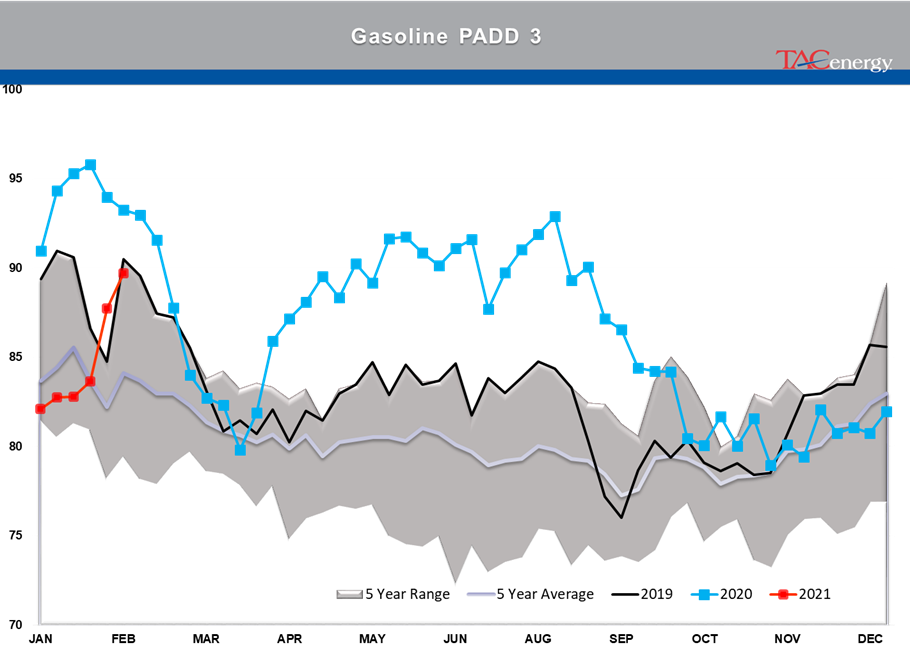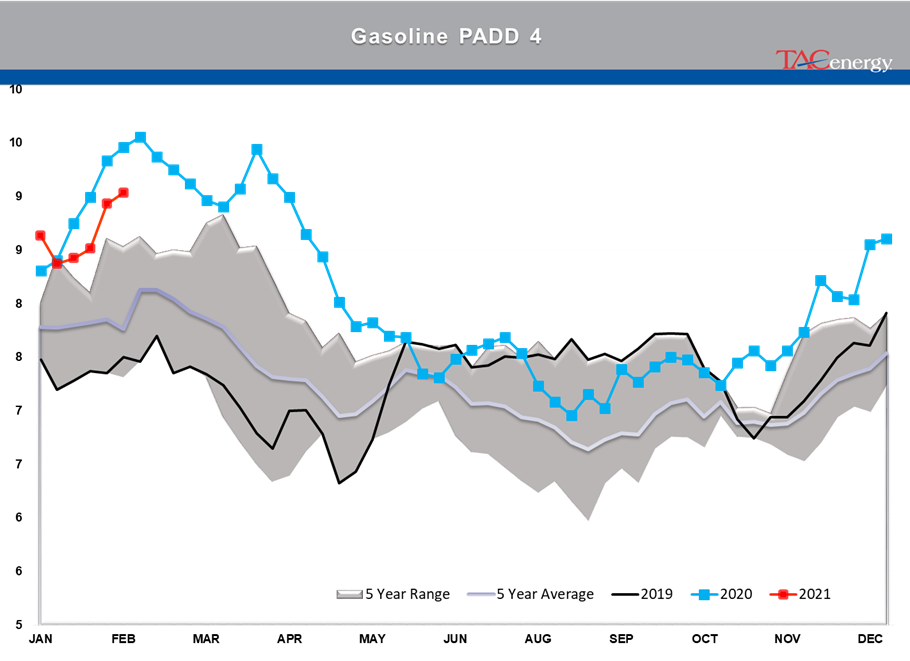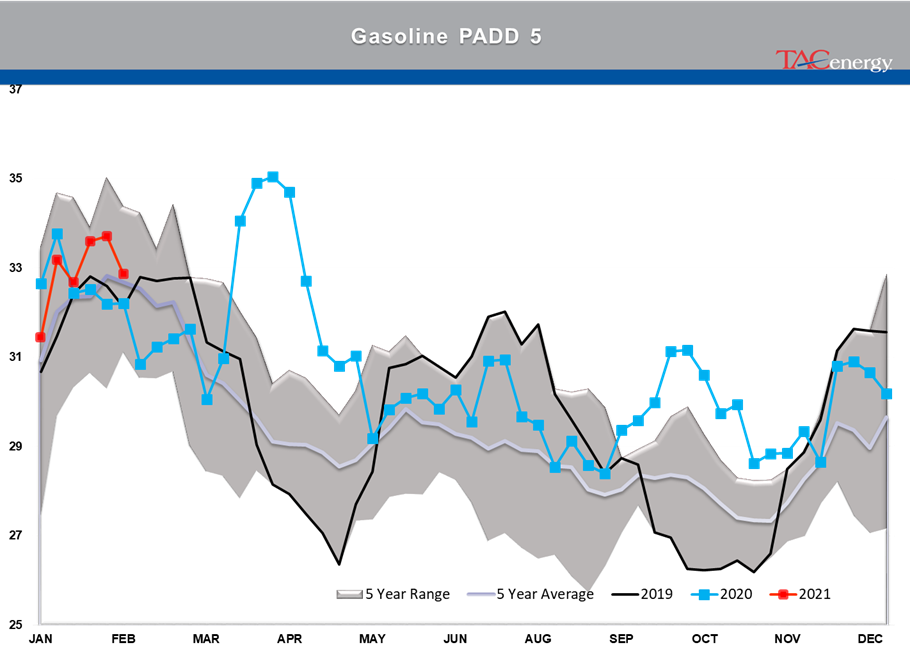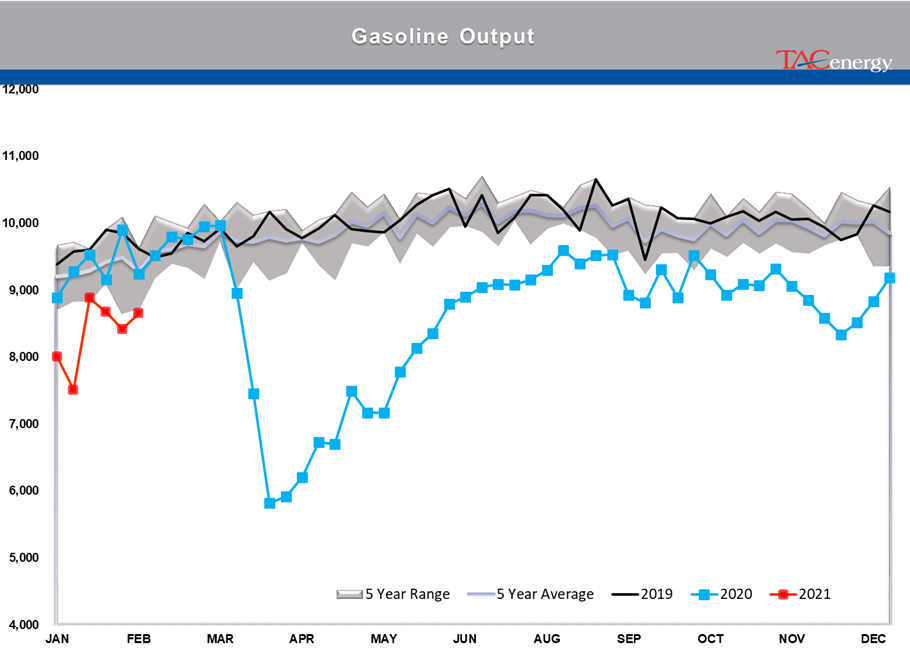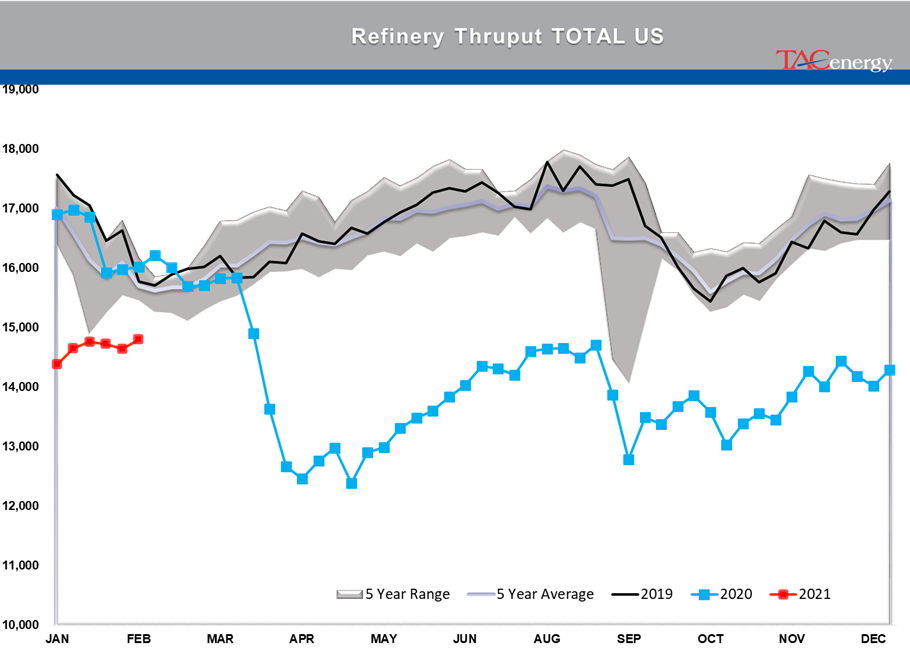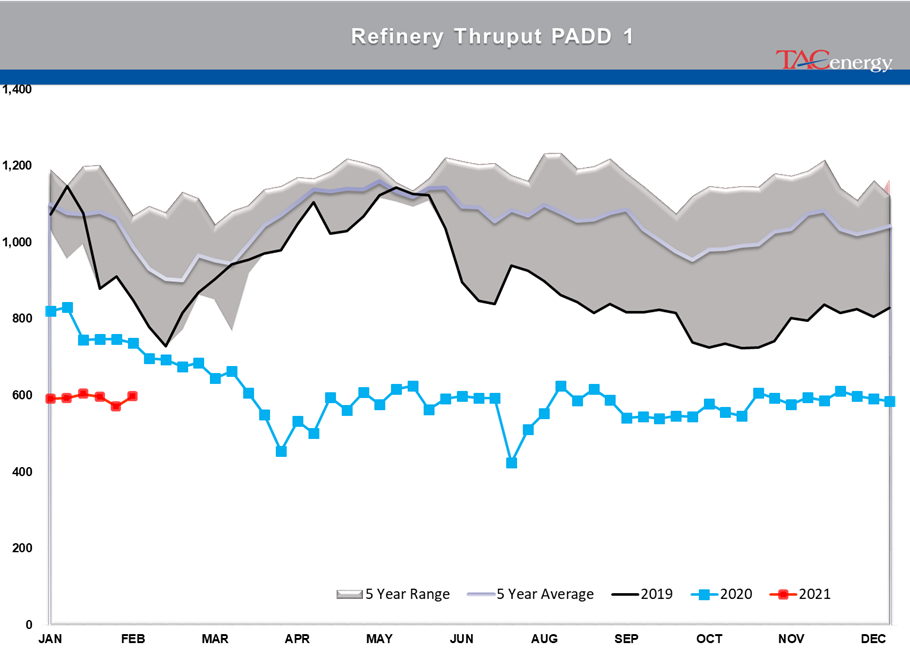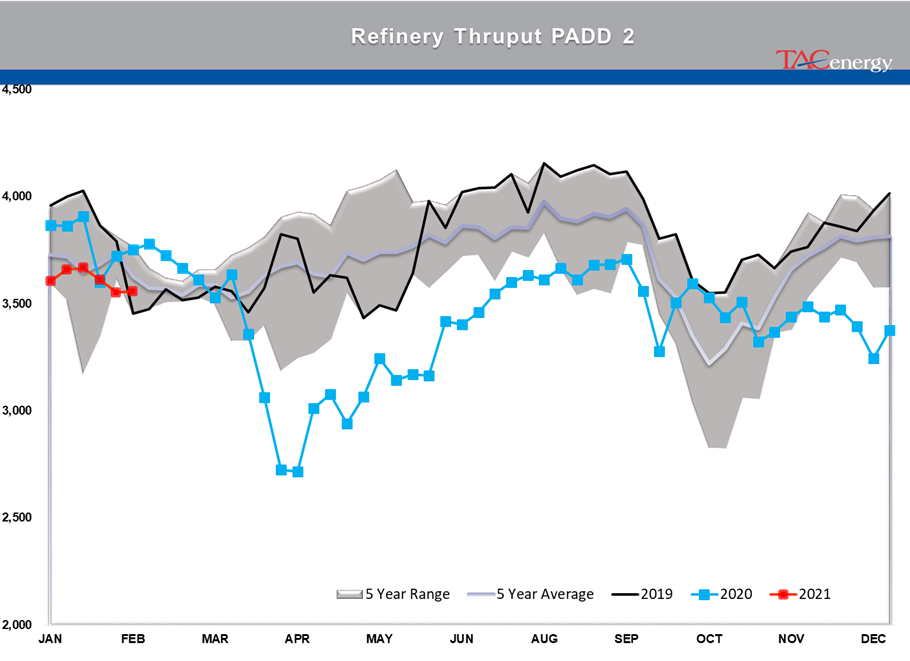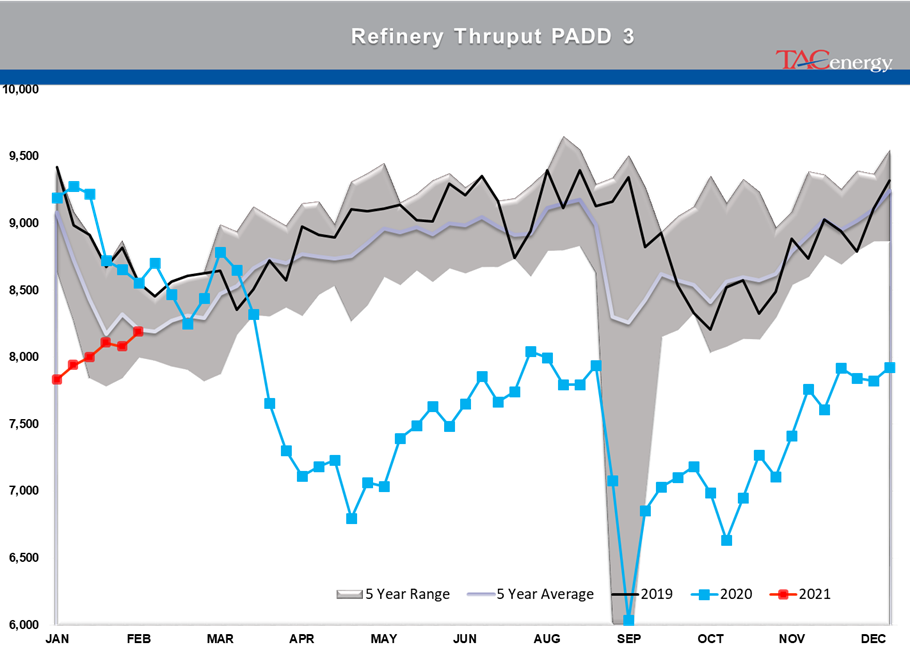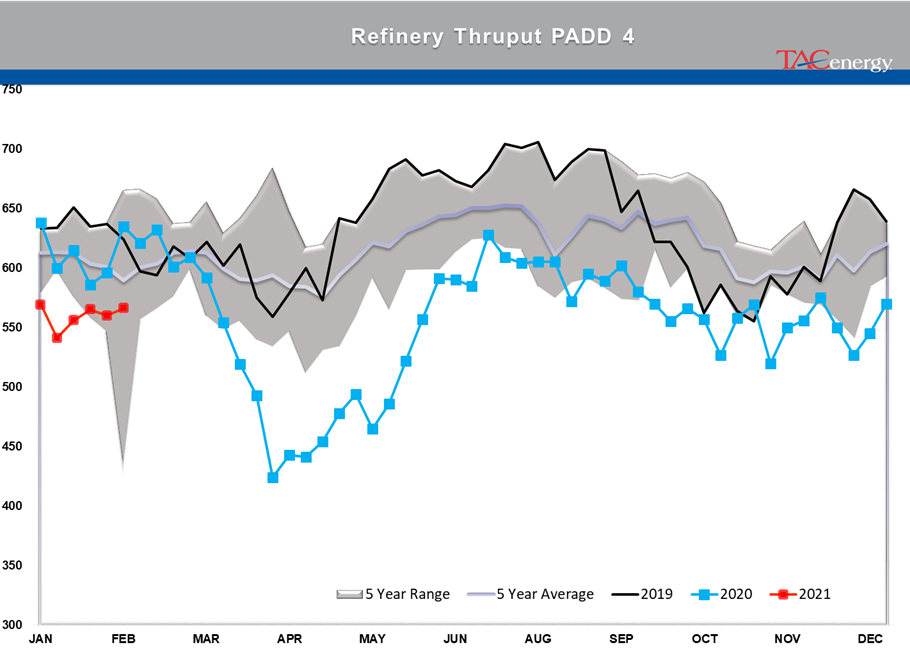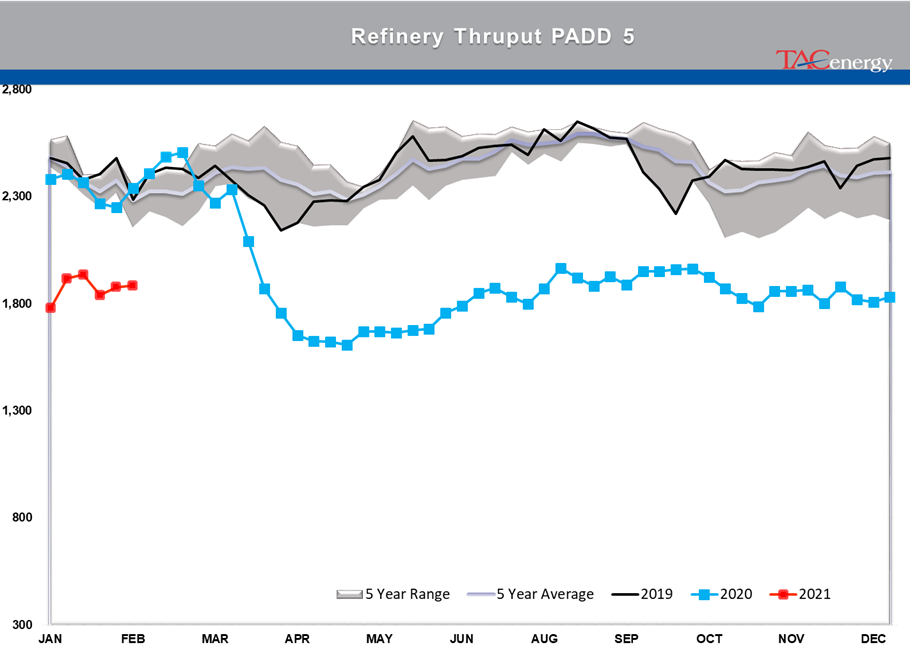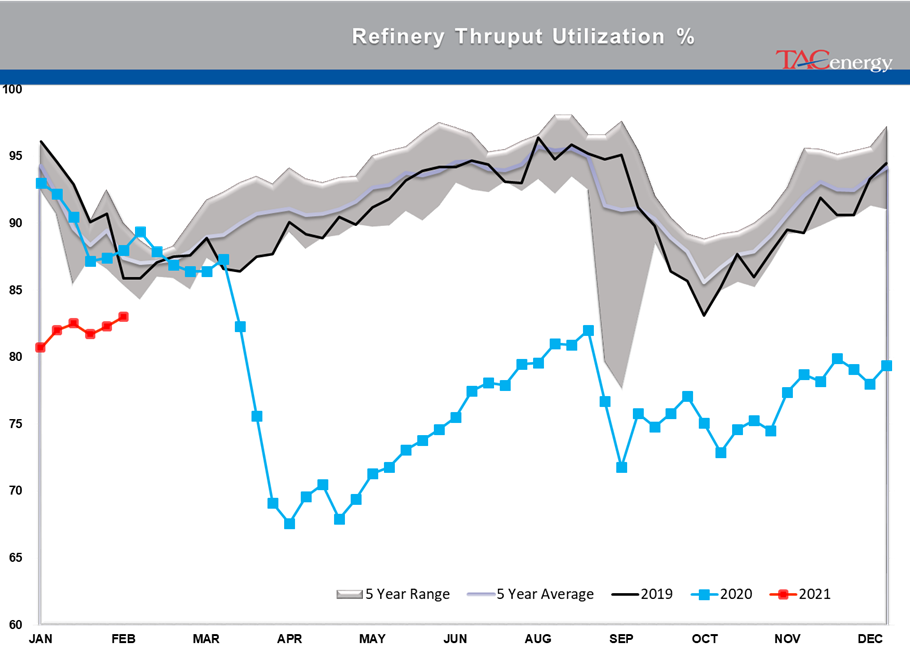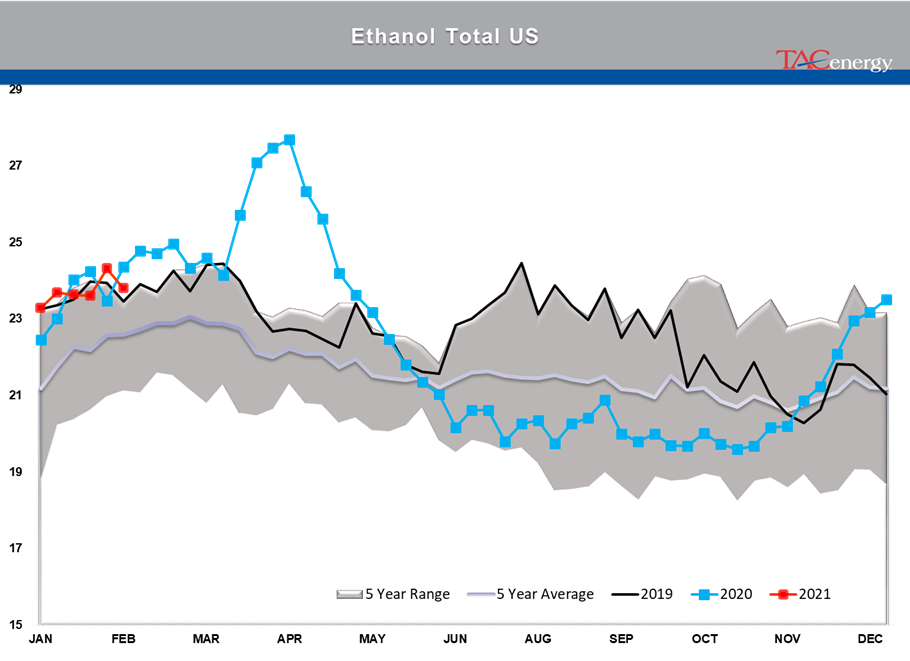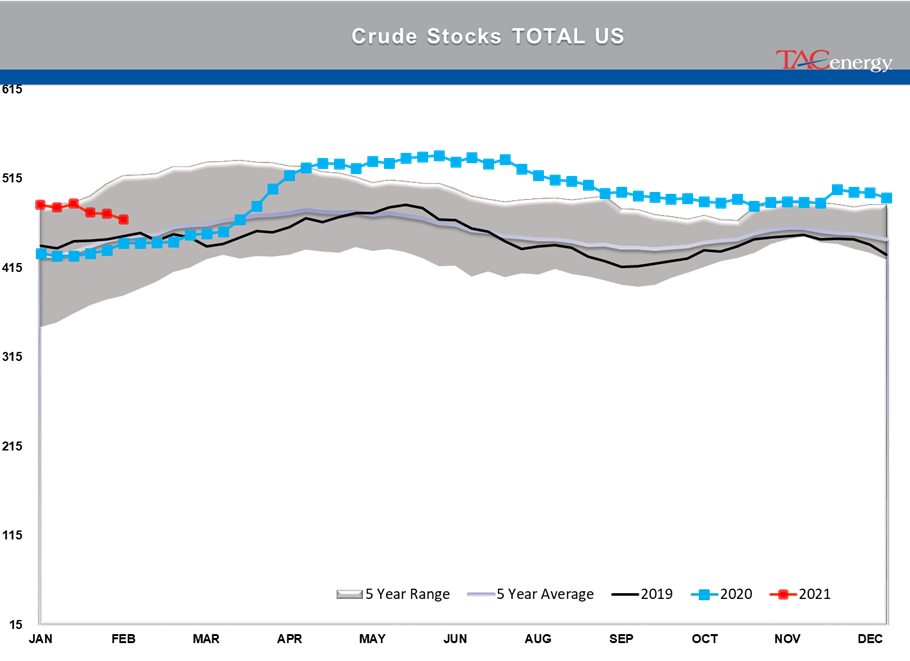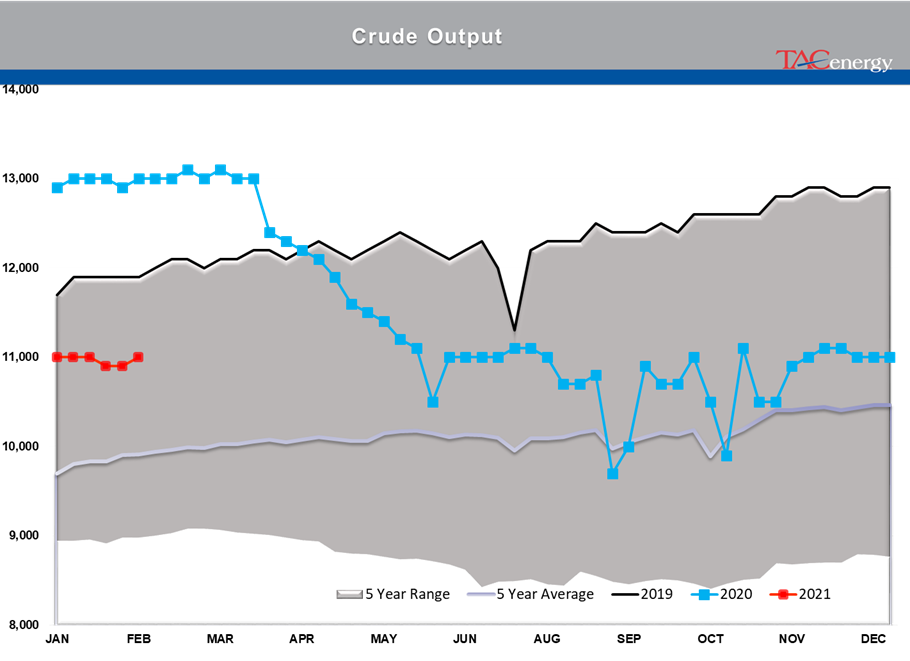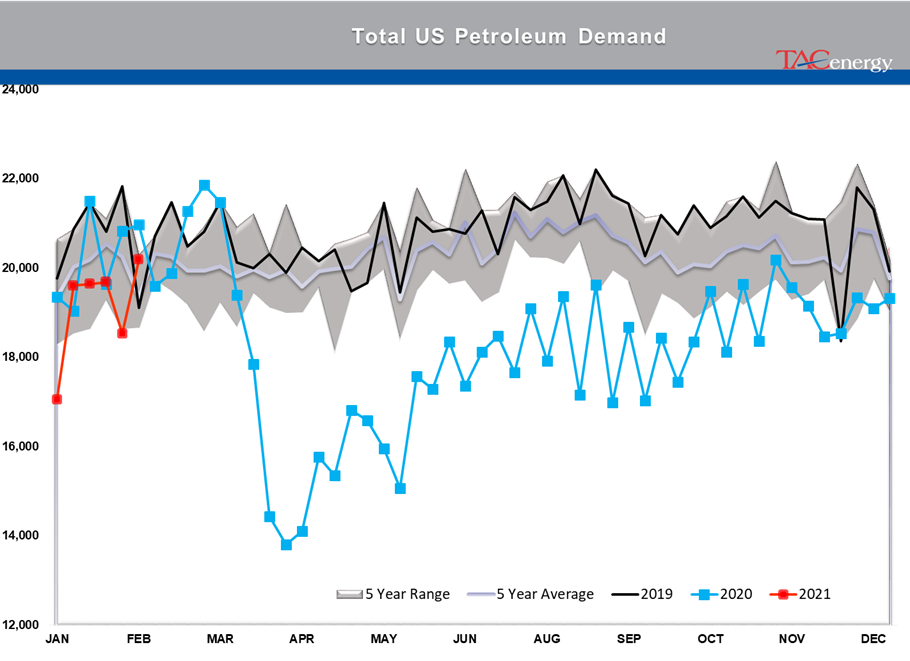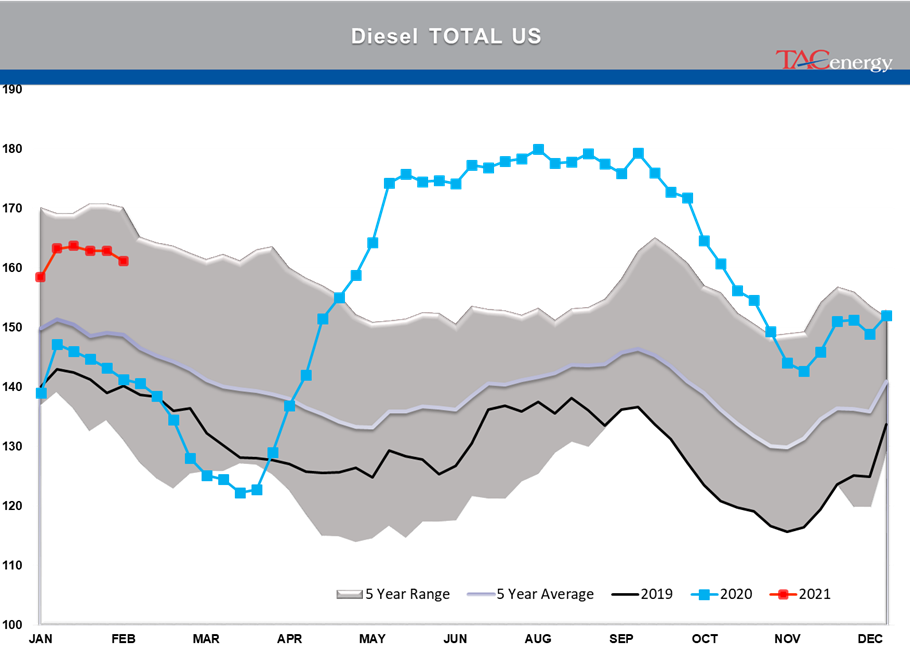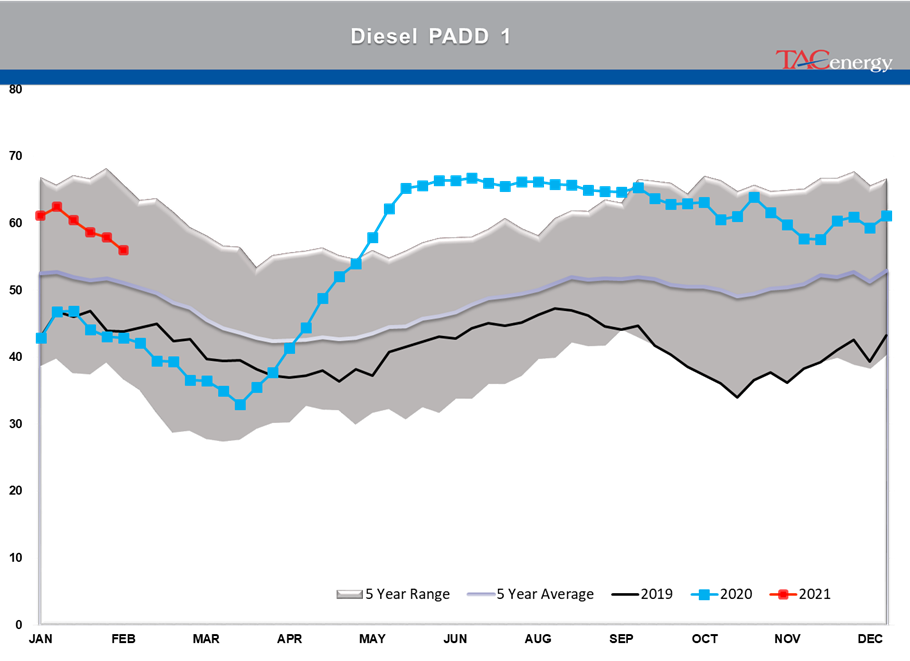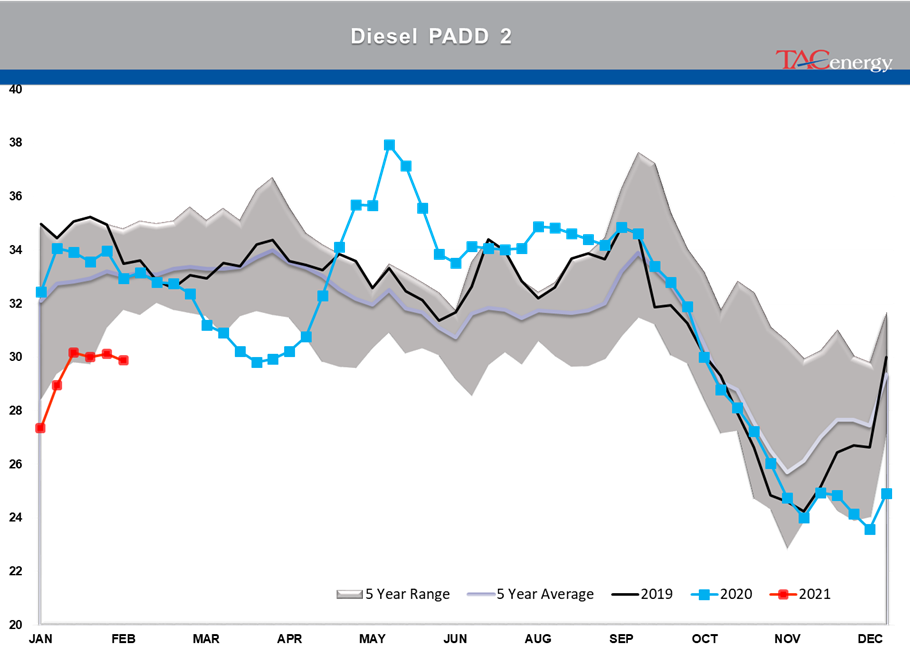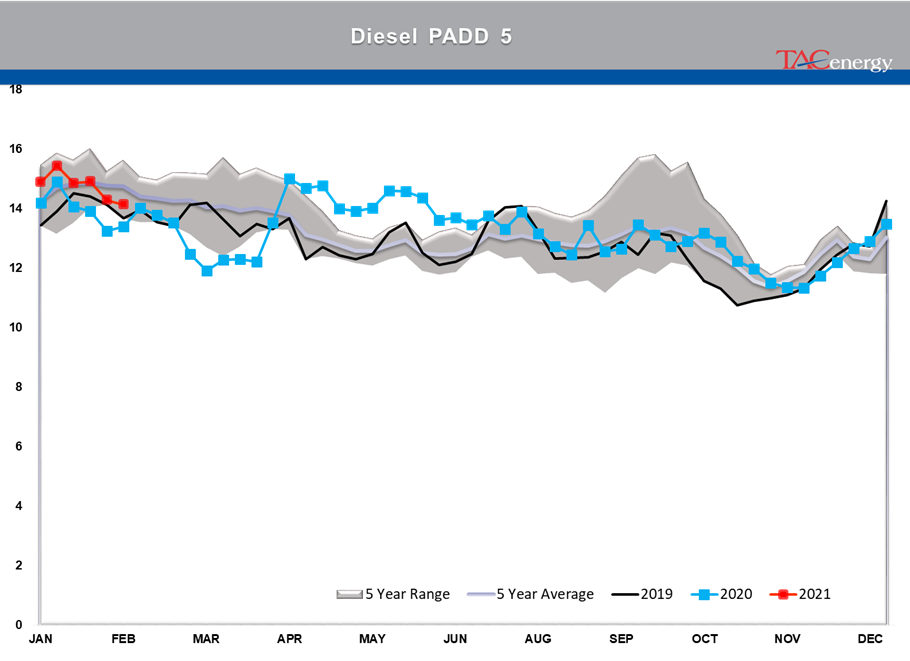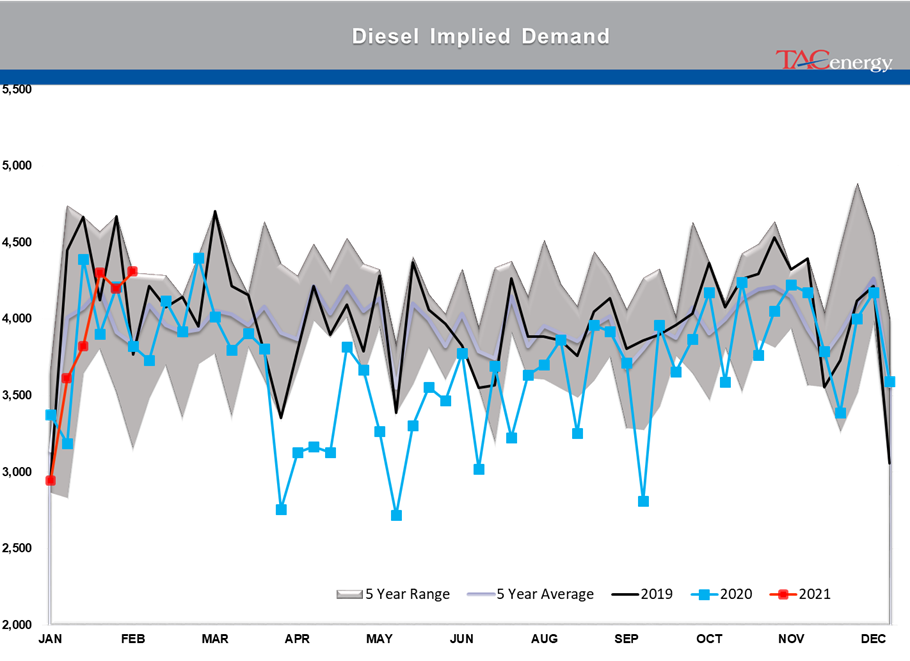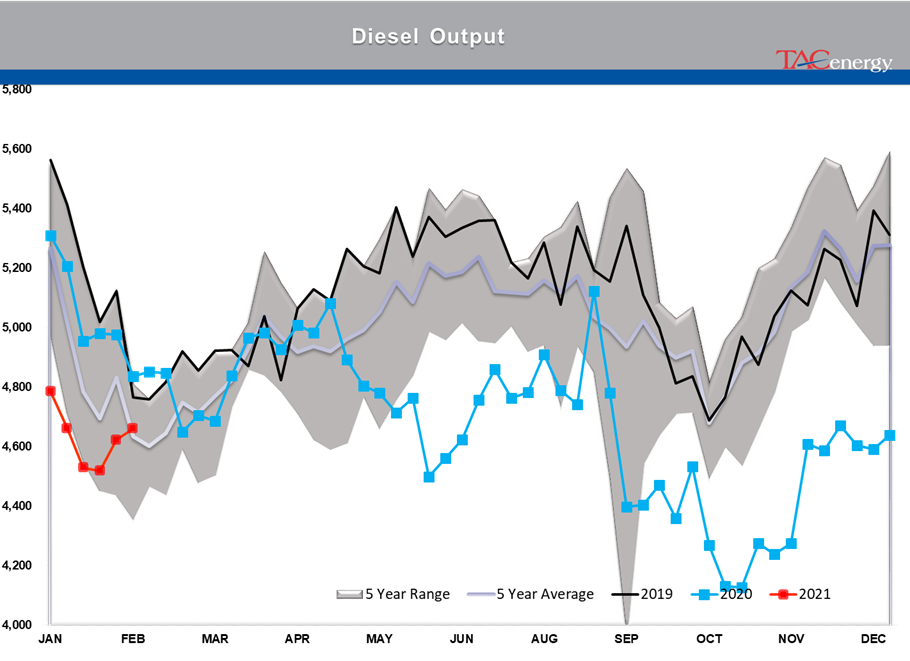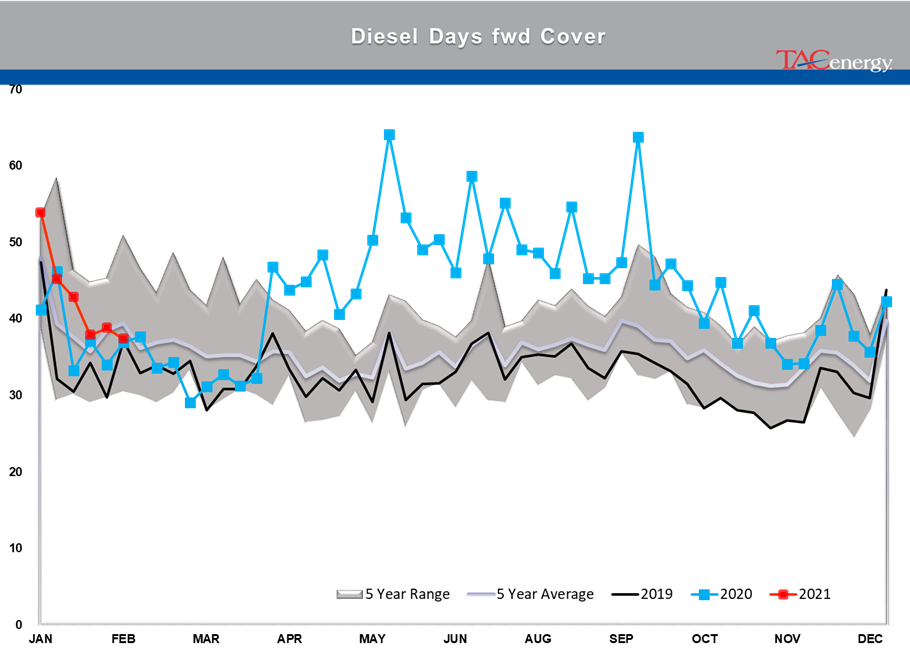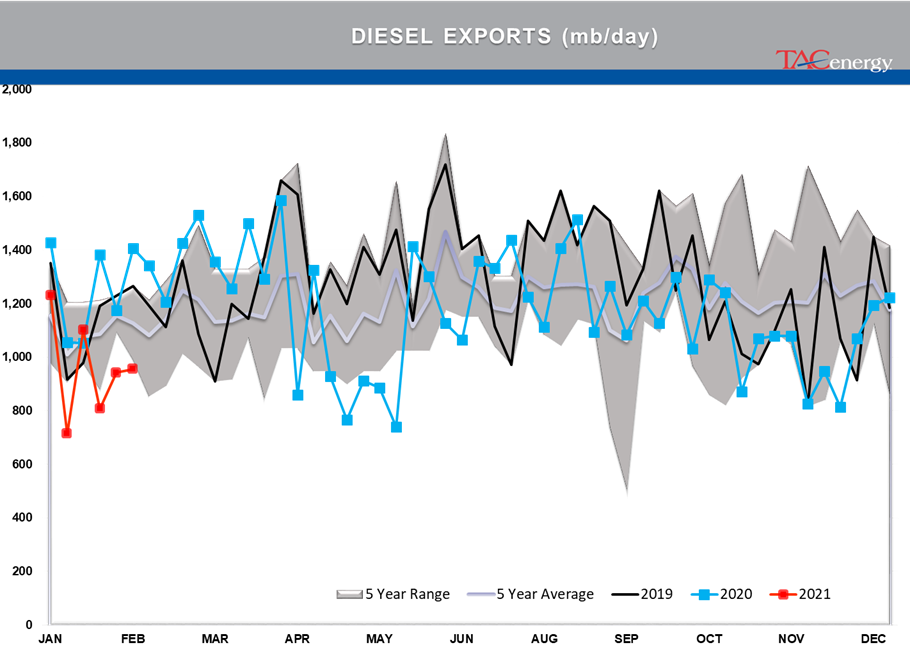Moving Through February Demand Doldrums

Energy prices are seeing a modest pullback to start Thursday after WTI and ULSD futures stretched their winning streak to eight straight sessions on Wednesday, reaching new one-year highs in the process. Some sobering fundamental data seems to be giving the market reason to pause, although the trend-lines are still intact and pointing higher for now, and prices have already bounced off of their overnight lows.
Gasoline prices are faring the worst this week as we move through the February demand doldrums with a parade of winter storms and record-setting cold on tap for the next week.
The DOE’s weekly report didn’t offer any help to the stumble in gasoline prices as another large build in inventories, most of which came in PADD 1, reminded traders that prices are up 65% from three months ago even though inventory levels have swelled by more than 10% during that stretch. The past three weeks alone have seen gasoline stocks move from below the five year average seasonal range to the top end of that range. With demand still struggling, leaving days of supply at the highest levels since the lock-downs last spring, the chances of the normal seasonal drawdown in supplies is looking like a challenge.
Refinery runs picked up across all 5 PADDs last week, which seems to be putting downward pressure on basis values along the coastal markets. Meanwhile mid-continent markets have strengthened this week, as inventories in the Midwest remain below average, and in what could be some expectation that the cold snap could cause some refinery hiccups, particularly for those plants on the southern edge of the region that don’t plan for single digit temps.
RIN values continue to come under heavy selling pressure this week. The new EPA administrator appointee seems to be holding his cards close to the vest, saying in an interview that he planned on reviewing options for the RFS, and not offering any hint on potential obligation changes.
The IEA’s monthly oil market report called the global supply/demand rebalancing “fragile” as the new, more-contagious variants of COVID-19 threatens the demand recovery. The report did make a reduction in its expected total demand for 2021, but only because the actual demand numbers for last year were found to be lower than previous estimates, so the rate of expected change year on year has not changed. The IEA’s report also highlighted that refinery runs in the Atlantic basin are set to lead the recovery in 2021, after they dropped to the lowest level in the 50 years the agency has been tracking those levels.
The EIA’s monthly short term energy outlook highlighted similar concerns for the first half of the year as the IEA’s report, with expectations for a strong recovery in the back half of the year. The STEO highlighted the relatively small spread between winter and summer gasoline grades this year, which are roughly half of what we’ve come to expect. The report suggests the weak demand and low refinery run rates are the cause for this small spread, but failed to mention the EPA’s fuel compliance streamlining that should make summer-grades less expensive this year.
Perhaps the most interesting detail in the February STEO is the comparison of natural gas prices in the U.S. which are hovering around $3/million BTU, vs. other parts of the world that are paying $10-$20. Chart below.
In case you can’t get enough of the monthly reports that remind us COVID has hurt demand, but it should get better eventually, OPEC’s monthly oil market report will be out later this morning.
Click here to download a PDF of today's TACenergy Market Talk.
Latest Posts
Gasoline Futures Are Leading The Way Lower This Morning
The Sell-Off Continues In Energy Markets, RBOB Gasoline Futures Are Now Down Nearly 13 Cents In The Past Two Days
Week 15 - US DOE Inventory Recap
Prices To Lease Space On Colonial’s Main Gasoline Line Continue To Rally This Week
Social Media
News & Views
View All
Gasoline Futures Are Leading The Way Lower This Morning
It was a volatile night for markets around the world as Israel reportedly launched a direct strike against Iran. Many global markets, from equities to currencies to commodities saw big swings as traders initially braced for the worst, then reversed course rapidly once Iran indicated that it was not planning to retaliate. Refined products spiked following the initial reports, with ULSD futures up 11 cents and RBOB up 7 at their highest, only to reverse to losses this morning. Equities saw similar moves in reverse overnight as a flight to safety trade soon gave way to a sigh of relief recovery.
Gasoline futures are leading the way lower this morning, adding to the argument that we may have seen the spring peak in prices a week ago, unless some actual disruption pops up in the coming weeks. The longer term up-trend is still intact and sets a near-term target to the downside roughly 9 cents below current values. ULSD meanwhile is just a nickel away from setting new lows for the year, which would open up a technical trap door for prices to slide another 30 cents as we move towards summer.
A Reuters report this morning suggests that the EPA is ready to announce another temporary waiver of smog-prevention rules that will allow E15 sales this summer as political winds continue to prove stronger than any legitimate environmental agenda. RIN prices had stabilized around 45 cents/RIN for D4 and D6 credits this week and are already trading a penny lower following this report.
Delek’s Big Spring refinery reported maintenance on an FCC unit that would require 3 days of work. That facility, along with several others across TX, have had numerous issues ever since the deep freeze events in 2021 and 2024 did widespread damage. Meanwhile, overnight storms across the Midwest caused at least one terminal to be knocked offline in the St. Louis area, but so far no refinery upsets have been reported.
Meanwhile, in Russia: Refiners are apparently installing anti-drone nets to protect their facilities since apparently their sling shots stopped working.
Click here to download a PDF of today's TACenergy Market Talk.

The Sell-Off Continues In Energy Markets, RBOB Gasoline Futures Are Now Down Nearly 13 Cents In The Past Two Days
The sell-off continues in energy markets. RBOB gasoline futures are now down nearly 13 cents in the past two days, and have fallen 16 cents from a week ago, leading to questions about whether or not we’ve seen the seasonal peak in gasoline prices. ULSD futures are also coming under heavy selling pressure, dropping 15 cents so far this week and are trading at their lowest level since January 3rd.
The drop on the weekly chart certainly takes away the upside momentum for gasoline that still favored a run at the $3 mark just a few days ago, but the longer term up-trend that helped propel a 90-cent increase since mid-December is still intact as long as prices stay above the $2.60 mark for the next week. If diesel prices break below $2.50 there’s a strong possibility that we see another 30 cent price drop in the next couple of weeks.
An unwind of long positions after Iran’s attack on Israel was swatted out of the sky without further escalation (so far anyway) and reports that Russia is resuming refinery runs, both seeming to be contributing factors to the sharp pullback in prices.
Along with the uncertainty about where the next attacks may or may not occur, and if they will have any meaningful impact on supply, come no shortage of rumors about potential SPR releases or how OPEC might respond to the crisis. The only thing that’s certain at this point, is that there’s much more spare capacity for both oil production and refining now than there was 2 years ago, which seems to be helping keep a lid on prices despite so much tension.
In addition, for those that remember the chaos in oil markets 50 years ago sparked by similar events in and around Israel, read this note from the NY Times on why things are different this time around.
The DOE’s weekly status report was largely ignored in the midst of the big sell-off Wednesday, with few noteworthy items in the report.
Diesel demand did see a strong recovery from last week’s throwaway figure that proves the vulnerability of the weekly estimates, particularly the week after a holiday, but that did nothing to slow the sell-off in ULSD futures.
Perhaps the biggest next of the week was that the agency made its seasonal changes to nameplate refining capacity as facilities emerged from their spring maintenance.
PADD 2 saw an increase of 36mb/day, and PADD 3 increased by 72mb/day, both of which set new records for regional capacity. PADD 5 meanwhile continued its slow-motion decline, losing another 30mb/day of capacity as California’s war of attrition against the industry continues. It’s worth noting that given the glacial pace of EIA reporting on the topic, we’re unlikely to see the impact of Rodeo’s conversion in the official numbers until next year.
Speaking of which, if you believe the PADD 5 diesel chart below that suggests the region is running out of the fuel, when in fact there’s an excess in most local markets, you haven’t been paying attention. Gasoline inventories on the West Coast however do appear consistent with reality as less refining output and a lack of resupply options both continue to create headaches for suppliers.

